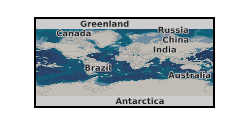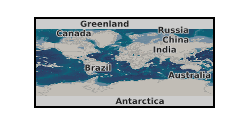Sulphate reduction
Type of resources
Topics
Keywords
Contact for the resource
Provided by
Years
Formats
Representation types
Update frequencies
-

EngD thesis describing experiments carried out using a variety of sandstones. This thesis investigates the microbial response to 10 ppm oxygen and 100ppm oxygen in experiments representing deep saline aquifer conditions. All experiments were conducted using sandstone, artificial groundwater and a microbial community designed to represent conditions found within deep saline aquifers. A microbial community, containing sulphate reducing bacteria, was isolated and identified from sandstone samples and then used in the experiments. The experiments were batch microcosms, a high pressure bioreactor and column flow experiments. Analyses of these experiments were conducted through gas analysis, water chemistry and DNA analysis from microbial communities.
-

Pyrite samples from selected sedimentary organic-rich formations or associated igneous and metamorphic rocks were analysed by conventional S isotopic analysis. Pyrites were measured in order to provide insights into their origin. Light and variable S isotope compositions in pyrite have been used to infer the influence of sulphate-reducing bacteria (and subsequent Se precipitation by sulphate-reducing microbes), whereas heavier S isotope compositions indicate a non-biological origin (i.e. physical and chemical diagenesis).
-

Loan IDA number - IDA271576. No data was obtained for microbial cultivation experiments with core samples SSK111460 and SSK111461 from UKGEOS Glasgow Observatory, borehole GGC01. Samples and data are derived from the UK Geoenergy Observatories Programme funded by the UKRI Natural Environment Research Council and delivered by the British Geological Survey. Attached document described methodology of enriching sandstone core (SSK111461) in different media types and shale core (SSK111460) in synthetic groundwater. No microbial growth was seen after 7 months.
 BGS Data Catalogue
BGS Data Catalogue